Create Your Own Pro Studio – Part One
Alex Holmes (aka GotSome) puts his own money where his mouth is and takes us through a step-by-step guide to finding and treating a perfect studio space The first thing I’d like to say is that I’m no acoustic scientist or physics expert. I like to think I’ve got reasonably good ears, as I’ve been […]
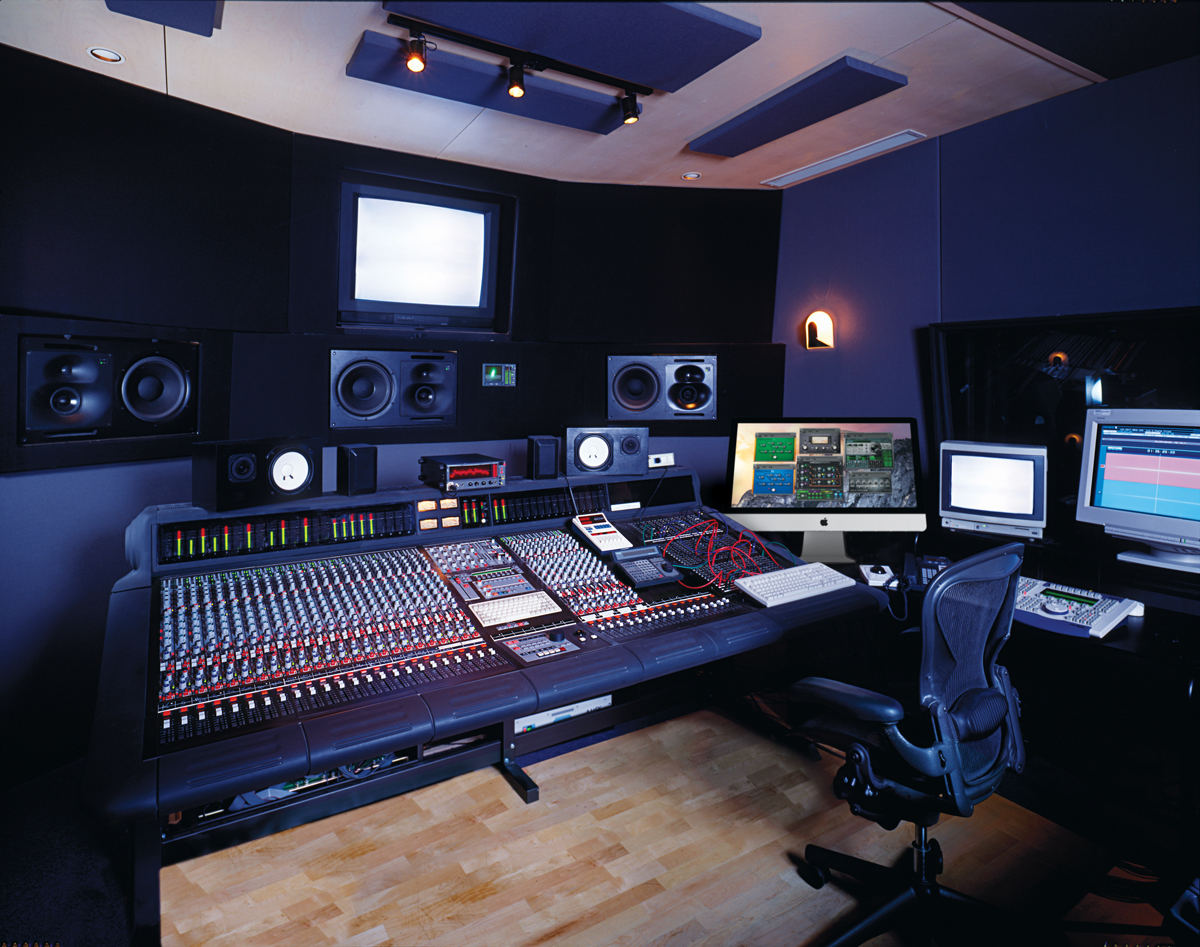
Alex Holmes (aka GotSome) puts his own money where his mouth is and takes us through a step-by-step guide to finding and treating a perfect studio space

The first thing I’d like to say is that I’m no acoustic scientist or physics expert. I like to think I’ve got reasonably good ears, as I’ve been writing music with computers for nearly 20 years, but I approached my first studio space – as I’m sure many of you have or will – with a series of scruffily handwritten notes and bookmarked web pages.
The aim of this piece is not to list and describe in great detail the specifics of how to mathematically treat your space, although we’ll touch upon that later, but more to give a real-world account of the process I went through in finding and treating a small-to-medium-sized studio.
Hopefully, you’ll find some of the information useful and we might be able to shed some light on certain factors that you hadn’t already considered.
My previous room was relatively large and in the ground floor of a house, with zero treatment (assuming you don’t count bookshelves), and with a linen cupboard set up as a makeshift vocal booth. Across nearly nine years, I learnt this room as well as I could, and was able to produce and engineer release-quality material, but to say it was a struggle is an understatement.

Our old studio space was a cluttered room in a house, so we were in desperate need of a dedicated room
Why a Studio?
It’s true that you hear stories of artists releasing highly successful tracks that were engineered in a bedroom, but if they’re serious about making music their career, then most will quickly move on to a more specialised space. You can achieve a lot by learning your speakers well, and also by using a decent set of headphones, which will bypass any room problems.
However, a dedicated, treated studio space will not only allow you to trust your monitors better, but will give you a proper working room, where you can get into the right mindset and invite other artists or musicians to work in a more professional environment. The benefits of having this room at home include increased security, zero commute and a decent kitchen.
However, if you end up working with a lot of artists or clients that you’ve never met before, you might not be so keen to invite them into your living space. There are also far more distractions, as you find yourself spending your lunch break watching those three episodes of Family Guy that you saved on your Tivo box.
For me, it was important to have an independent space where I could set up all my equipment with my writing partner, and to separate my home and working life. So it was that my process began with trying to search out a studio room. If you’ve already got a space, be it at home or elsewhere, then you may be more interested in next month’s part 2, where we discuss measurements and treatment.
I began my search last summer in Bristol. The size of the town or city in which you live will have a massive bearing on the cost and number of studio rooms that are available to rent. Being a hotbed of music and culture, I expected Bristol to provide plenty of options. Alas, this wasn’t the case, and it took several months of searching before we found the perfect spot.

How easy finding a suitable space for your studio will be is likely to depend on the size of the town or city you live in. Having said that, GotSome (above) found things far from straightforward in Bristol
The Search
The first thing you need to do is decide what you need out of a studio. How big does it need to be to fit in all your equipment? Do you intend to try to record drums in there or set up a vocal booth in the corner?
Do you want somewhere that’s already been acoustically treated, or are you looking to do this yourself? Your next task should be to use your contacts and speak to everyone you know involved in music, bands or production and engineering.
You might find your producer mate is thinking about moving to London next month and that his room will soon be up for rent, but he didn’t think to mention it as he didn’t know you were looking. Once you’ve exhausted all leads, it’s time to turn to Google, where terms such as “studio space”, “music studio to rent” or “studio to rent”, followed by the name of your town/city should start to give you an initial idea of what is available.
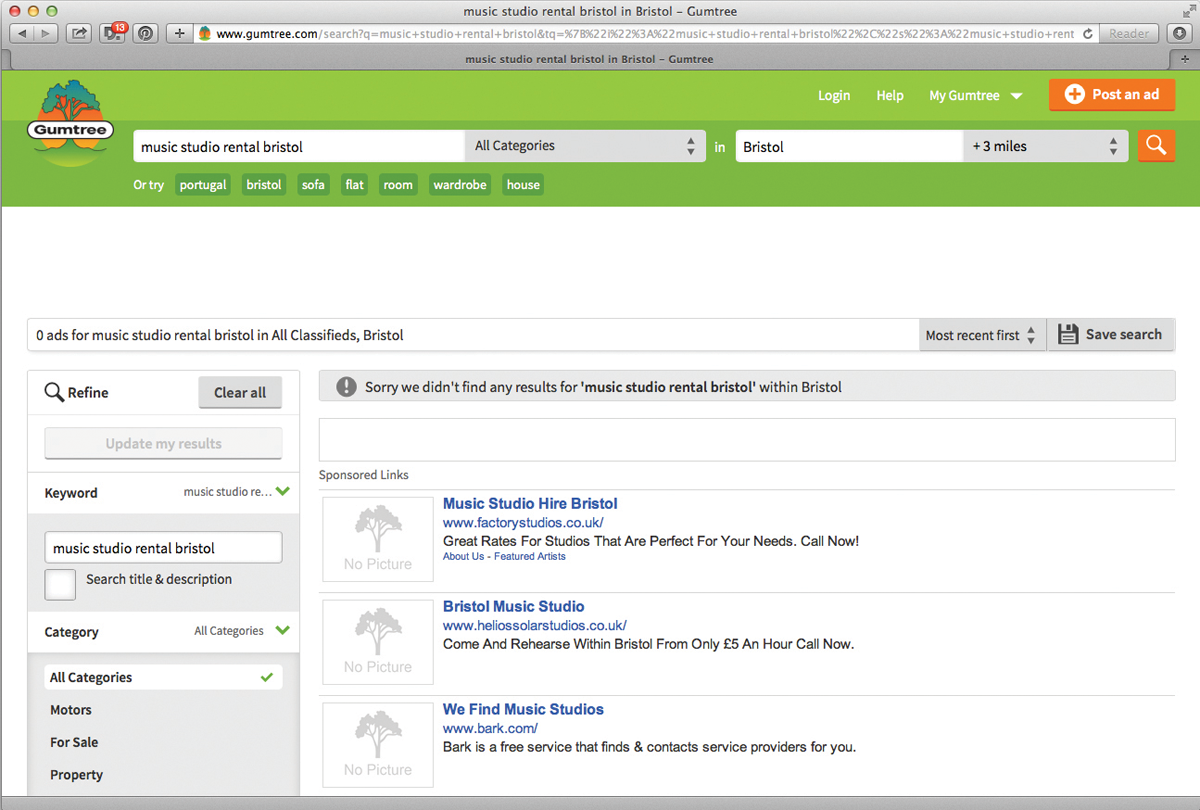
Gumtree can be a great source for finding spaces, but you should expect to get all sorts of listings for rehearsal rooms and offices before you find the perfect spot
Find out who to speak to and drop them a concise email enquiring as to the availability of the room, and ask whether it would be appropriate for use as a music studio. The problem with many “studio spaces” is that they are often set up for either artists or offices, and are alongside other similar rooms – which can lead to issues with sound spillage.
You need to consider when you are likely to be working; if you’re a night owl, or you also have a day job and intend to use the studio only at night, then you may be able to persuade the owner of the property that you won’t be around to disturb their other tenants in the daytime. You’ll probably also end up with a load of listings for rehearsal and recording studios that rent by the hour or the day for one-off recordings and band practices, which is annoying, but inevitable given the search criteria.
If you’re really lucky, then you might find an established complex of studio rooms that are already set up, soundproofed and ready to go. This is the dream scenario, as you already have treatment and (hopefully) security in place, but be prepared to pay extra for this, and for the treatment to not necessarily be done to a professional level. In our searching, we found several of these places, but they were either too expensive, or they didn’t have any available rooms.
At this point, it’s a good idea to ask if you can be put on a waiting list so that they’ll get in touch if a room becomes available. Also, don’t be afraid to ask if they know of any other studios around town, as many businesses will be aware of similar set-ups and are generally happy to help.
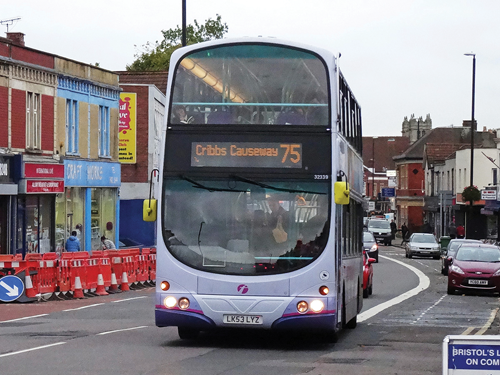
Check to see what the transport links to your studio are like. There’s nothing like a long commute to kill your creativity
The Perfect Place
One month into our search, and just as things were looking a little grim, we found a listing on Gumtree that looked promising. Unfortunately, the studio itself was rather dark and dingy, the area wasn’t that easy to get to by public transport, and it wasn’t a particularly pleasant part of town! This highlighted a number of things that we hadn’t thought about before.
Firstly, if you’re going to be working in the space a lot, you want to make your commute as easy as possible. There’s no use in having an amazing studio that takes you an hour to drive or walk to if it’s going to hinder the amount of time you spend there. When you find somewhere online, check the postcode and see what the bus and train links are like, and once there, see if there’s somewhere to lock a bike or if there’s a car parking space.
Due to the nature of music studios making a lot of noise, you’ll often find them away from residential areas in industrial or business estates. If you’re likely to work late often, check how safe it is to walk home at night. Most importantly… are there shops for studio snacks, or a pub nearby? If the studio is located in a more residential area, it’s worth checking to see if there have been any complaints or if there’s a curfew for making loud noise.
Finally, after a few months of looking, we found what looked to be the perfect place on Gumtree. It was in a business park near a busy high street and a main bus route. It turns out another producer, who was also feeling frustrated about the lack of decent studio spaces in Bristol, had decided to do something about it and build several studio shells inside a larger property.
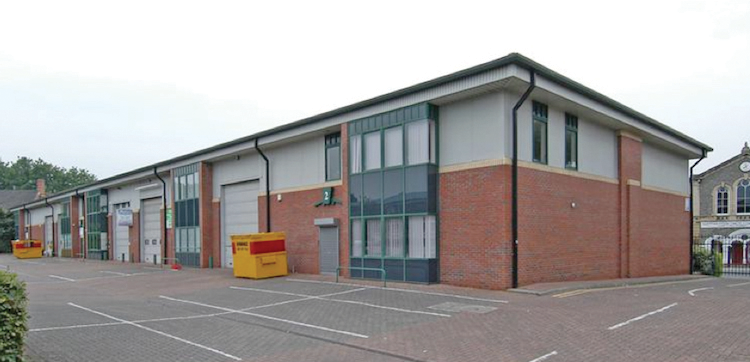
As they’re normally associated with making lots of noise, many studios are located away from residential areas in business parks. Be sure to check if there are any noise restraints if you see houses or flats nearby
Only one of the proposed rooms had actually been finished, but we could see that it had been built to a high standard, and we immediately expressed our interest.
Given the high demand for small studio spaces in Bristol (every other person is a producer or DJ here), we found ourselves in a bit of a game of cat and mouse. Until you sign a contract or put down a deposit, it’s possible someone else could see the advert online and come and outbid you. Luckily, our landlord to be was a trustworthy chap, and seemed keen to get things moving and have us onboard. At this stage, we found ourselves in the unique position of being able to have input into the building of the room itself.
We took measurements of our main studio furniture and mapped things out on the floor to work out the optimum size and shape that could fit into the available space. There are plenty of diagrams online for optimum studio shapes, a perfectly square box being the absolute worst for acoustics. We opted for slightly angled walls to help break up the reflections, although a few restrictions outside the room meant that we couldn’t get them in perfect symmetry, which would have been desirable.
Other Considerations
And that was that. We left them to build for a couple of months while we prepared for the move. Inevitably, in that time we received a couple of emails back from other places that had now become available, but we were happy to stick with the spot we’d found. There were a handful of other factors that helped us in our decision, and are also worth considering.
Are the toilets in good condition? Is there a kitchen area, or at least a fridge for milk and a kettle? God forbid, there are no tea making facilities! Is there some sort of space that you can use to get out of the studio and relax? Also, how many other studios are there in the building, and do you know who the other artists/engineers are?
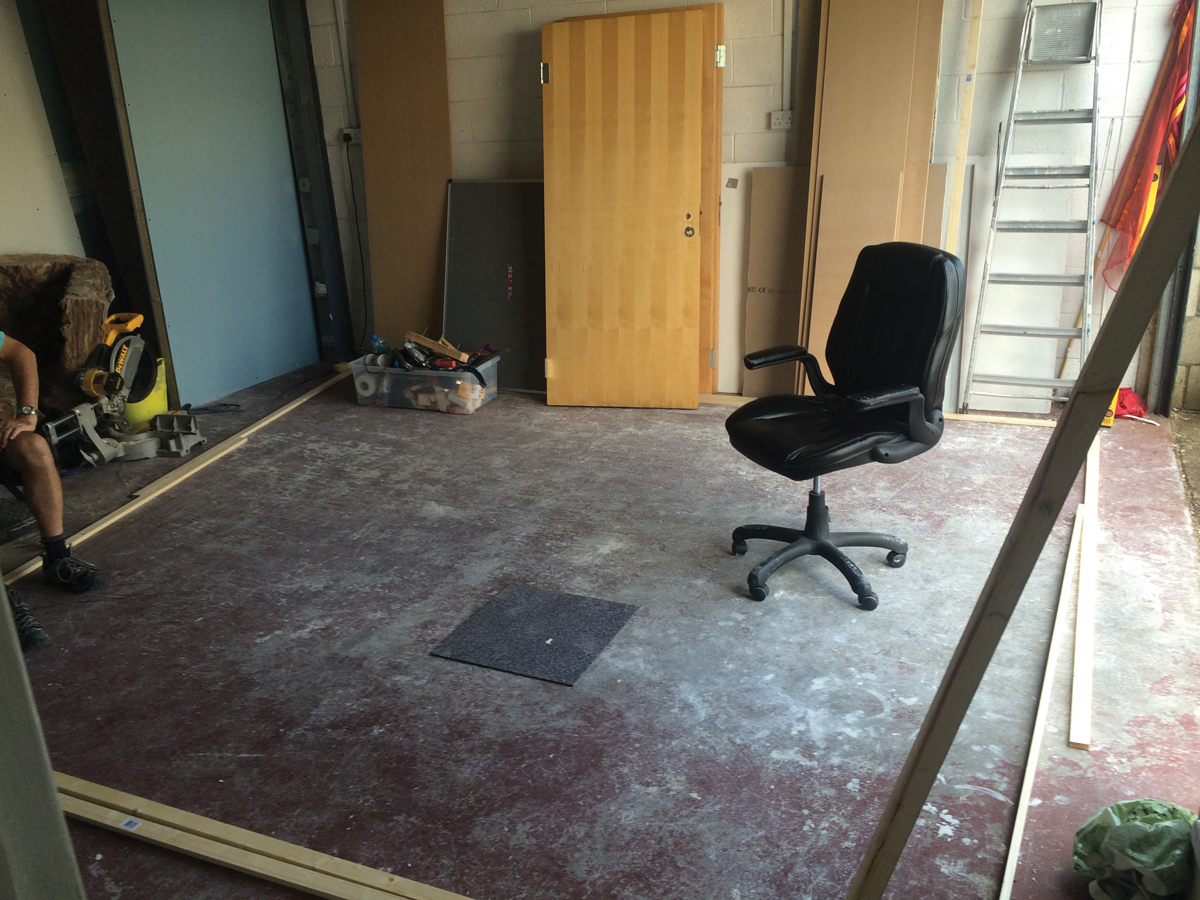
We were lucky enough to be involved with the building stage, and brought dimensions of our studio furniture to help with working out the size and layout of the walls.
This is an interesting one, as the availability of other performers could open up all sorts of doors for future collaborations. You might have the opportunity to share kit, and a fresh set of ears or different set of monitors could really help you finish off a mix.
We wouldn’t necessarily recommend making a decision solely on the fact that there are potentially interesting artists occupying the other rooms, though. Just because they’re there doesn’t mean they’ll have any free time to work with you, and you may find you have completely different working hours.
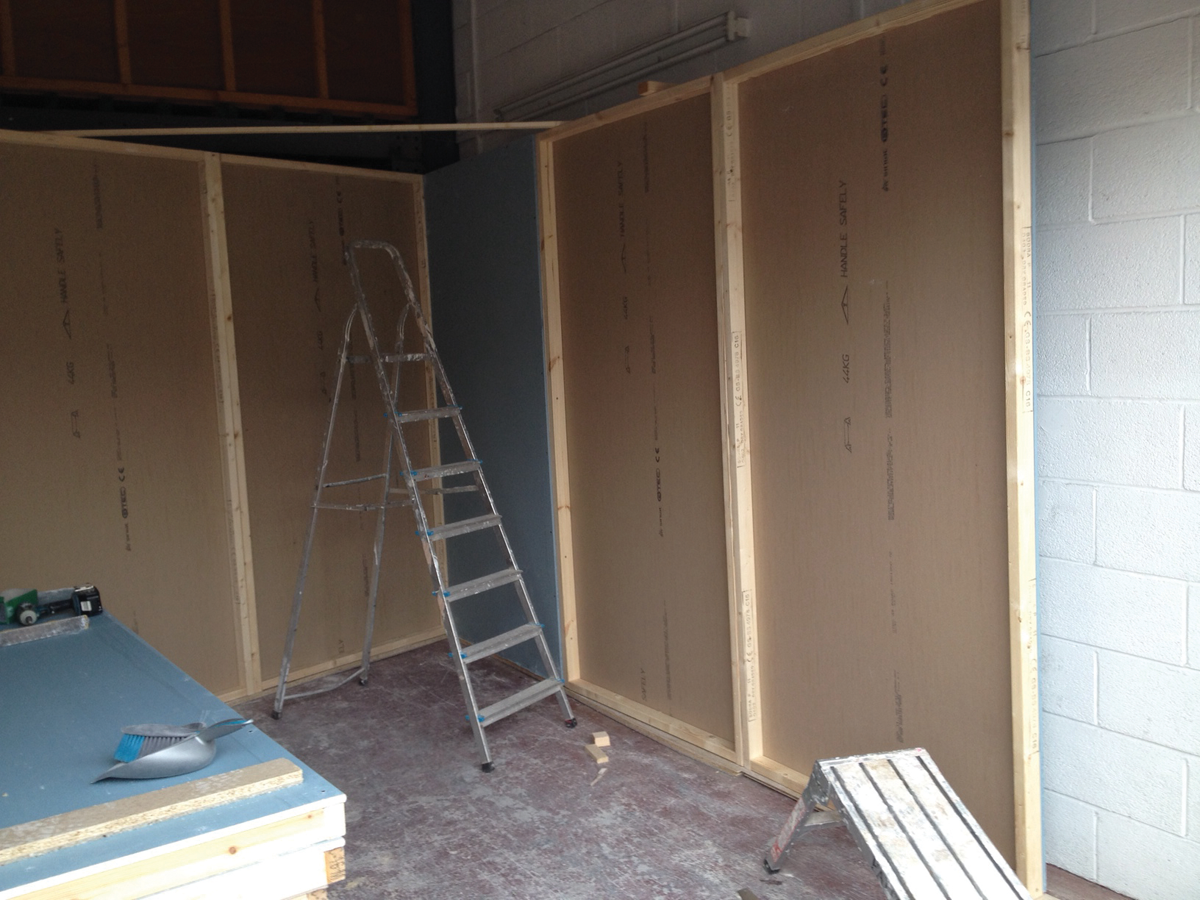
How does the studio make you feel? The colour of the walls and floors and the amount of available light could have a great effect on how you work over time. Working in what feels like a cave with no natural light can be difficult for some people, although it’s less of an issue if you’re planning to be working mostly at night.
If you’re lucky enough to have windows, check that they’re well insulated and secure. Our room has none and, to be honest, over the winter it was fine working long hours in there. However, traveling to work in the blazing sun of summer, then having to duck inside to our dimly-lit tomb was less ideal, although you get used to it.
You could potentially do a little decorating to make things feel a bit more homely, but first make sure the landlord is OK with this. We managed to find a small plant that required practically no sunlight, and surprisingly it’s lasted OK so far.
You might also want to check the situation with heating and airflow. Most high-end studios have a carefully built-in air con system, but this can be expensive, as you have to consider the sound escaping.
Our room doesn’t actually have any airflow in it, so our highly sophisticated air con system is basically opening the door for five minutes. As it’s a shell inside a larger building, there’s also no heating, and the winter was bitterly cold. Luckily, the room is small and insulated, so it’s fairly easy to heat using a small electric heater.
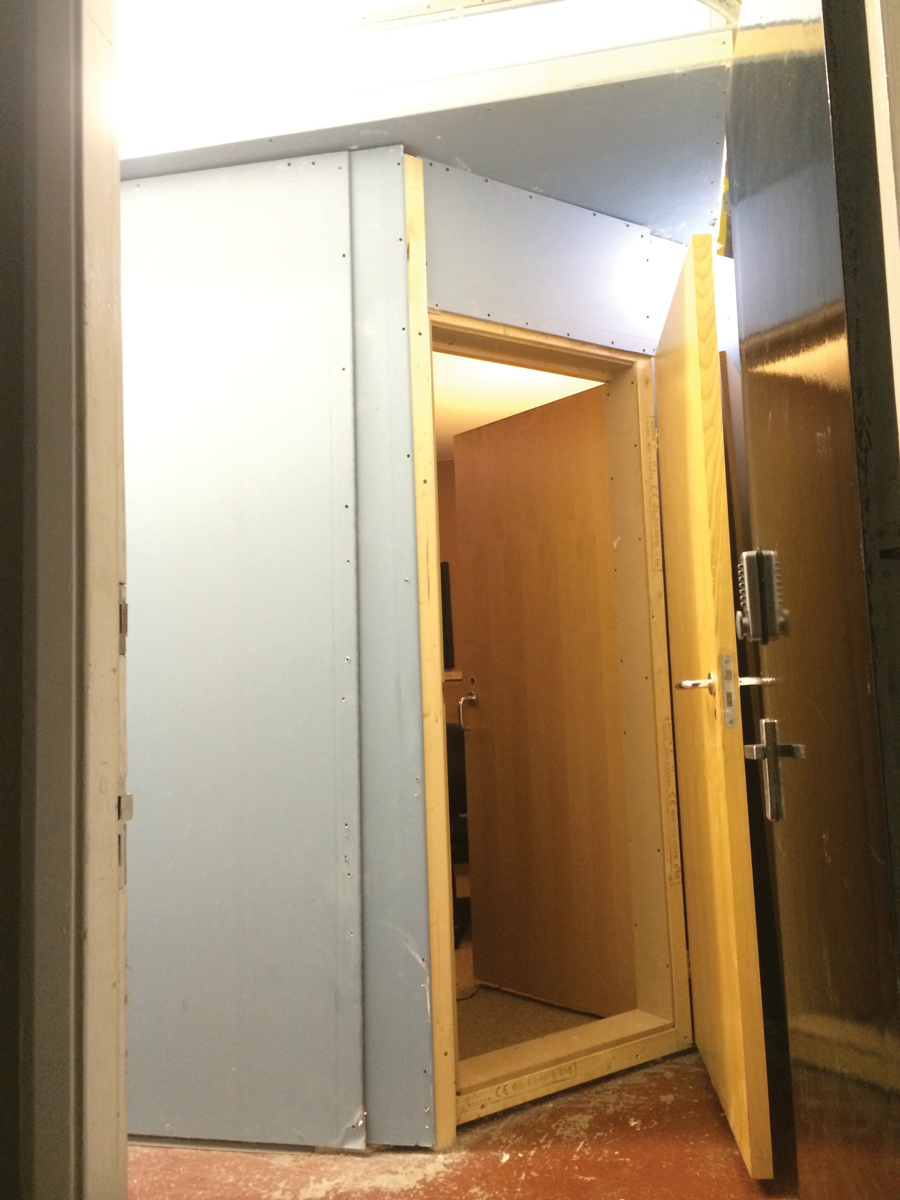
Our double doors help keep the sound locked in, but have to be opened every now and then to let in some fresh air
We’ve listed a whole load of things to think about, but haven’t really touched upon the most important; how does the room sound? If the room is already treated and has some equipment in it, then bring along a handful of tracks to test out (including some your own) that you know the sound of inside out.
This can give you a vague indication of the space, but really you’ll only know for sure once you have your own monitors set up. Unfortunately, it becomes even more difficult to judge when you’re in an empty room with no speakers.
You could try clapping or shouting to hear how the higher frequencies decay, but if the room is empty, then it will change dramatically once you start to put furniture, equipment and treatment in it. As long as the room is a reasonable size for your requirements, and you’re happy with all the other things that we’ve discussed, then your best bet is to pull the trigger and go for it.
If you’re willing to put in the time and effort, then you can fine tune the sound of the room yourself with careful placement and treatment once all your equipment is in place.
Buyer’s Guide – Music Insurance
If you’ve previously been working from home, then most of your kit has probably been covered by your home insurance policy. When budgeting for your new space, make sure you factor in the insurance premium to cover all of your equipment, as you’ll need to insure everything separately.
Although there are many options for insurance, it’s wise to choose a company that specialises in music equipment or has a specific music package, as they will offer cover tailored to your needs.
Three of the biggest that are worth investigating are Allianz, MusicGuard (which is part of JLT) and E&L Musical Instrument Insurance. If you haven’t already, make a spreadsheet with all of your equipment listed, including approximate price (when you bought it and its current approximate replacement value) and most importantly the serial number. This can take a long time, but once it’s done you simply need to update the list each time you buy new equipment.
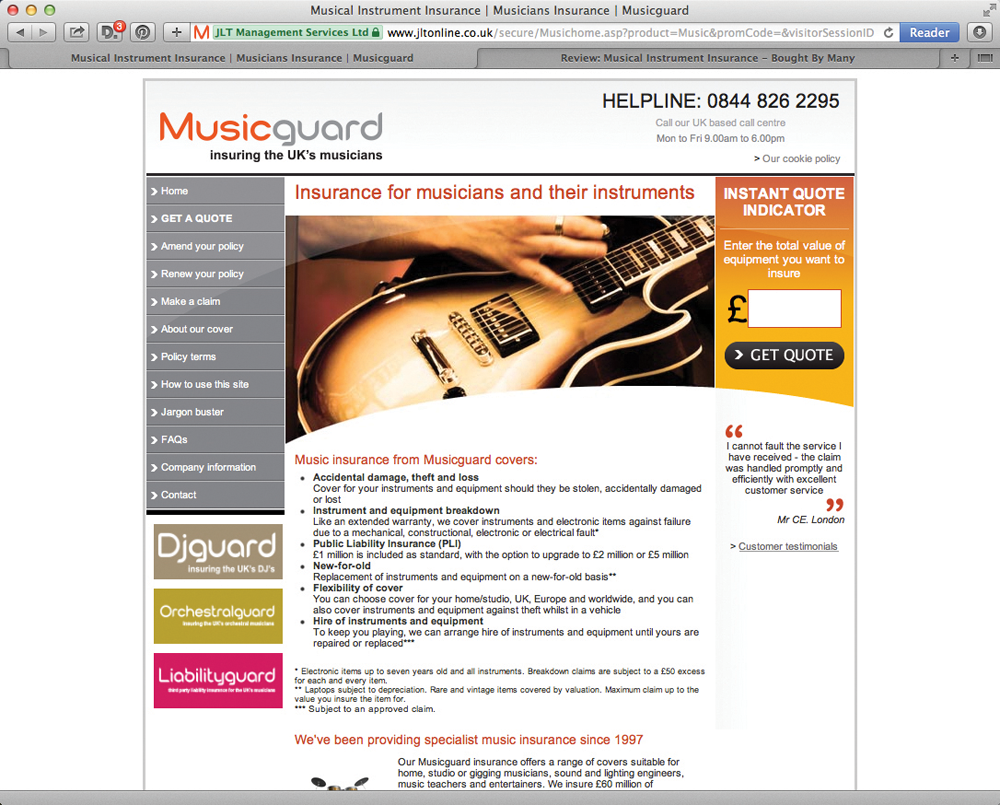
Keep this spreadsheet in a folder alongside any receipts, then you’ll have everything in one place should the worst happen. This will also speed things up when it comes to purchasing your cover, as unlike home insurance, you’ll likely need to list every single item that you want to insure. We decided to go with MusicGuard, as it was recommended by a engineer friend and seemed to offer a competitive quote once we’d entered the total amount of all the equipment, the postcode of the studio and the finer details.
Some things you’ll want to consider that will affect your premium are whether you need to take any of the equipment on the road, whether you want to take it abroad, and whether it’s likely to be left overnight in a car. If you have a complex live set-up with lots of synths, then you’ll probably want more comprehensive cover for when you’re doing gigs.
However, if you’re producing in the studio, then DJ-ing with a USB stick, you won’t need as much. Make sure you read all the fine print, and check that the premises fulfils all requirements, paying careful attention to the windows and main doors – and the types of locks.
The Dotted Line
The final part of the puzzle at this stage is the tenancy agreement. Although you may be a little unsure about how things will turn out, your landlord will probably want you to sign at least a six-month contract.
Given how long it will take to fine tune the room and for your ears to adjust to their new environment, this is a reasonable amount of time, after which you should know whether you want to stay on or look for somewhere else. Make sure you pick through the contract with a fine-tooth comb, and get someone to help if the language used is confusing (we’ve yet to read a legal document that isn’t!).
You basically want to make sure that you’re not liable to have to pay for any repairs to the building, such as a leaking roof, and that the landlord covers all council tax, water rates, electricity and phone/internet bills. This may differ slightly from place to place, but generally all bills should be included in the overall monthly rent.
You’ll also want to check whether you’re allowed to work overnight and, assuming you’re using the premises as a professional, whether it’s actually a business contract or a residential one. More established studios should have all of this in place, but smaller set-ups might need a little back and forth to reach a contract that you’re happy to agree upon.

Once you’ve secured a suitable building, moved in all your kit and made your new studio feel like home from home, it’s time to get everything sounding right. We’ll cover that next time…
Home from Home
And that’s it. If you have found yourself a new studio space, congratulations! Now comes the hard graft of moving all your equipment in and setting it all up again in the optimum arrangement. It’s worth using this opportunity to take a tidier approach to cabling and organisation, possibly getting some cable ties and labeling any plugs as you set everything up.
You’ll also want to consider which parts of the room or bits of equipment you’re going to want regular access to, or where you might be planning to add more gear or a vocal booth in the future. Join me next month when I’ll go into more detail on letting my OCD run riot and start testing the frequencies of the room, and then add some acoustic treatment to get it sounding tight.
Our Build Your Own Pro Studio feature will continue soon…